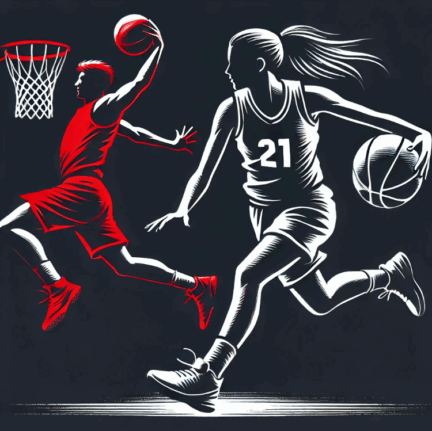We present a practical guide to how modern college athletes turn on-field performance and social media presence into real revenue today.
In 2024, headline valuations and brand deals showed the rise of this new era. Shedeur Sanders, Livvy Dunne, Travis Hunter, Arch Manning, and Cooper Flagg led with multimillion-dollar partnerships across Nike, Gatorade, EA Sports, and more.
The nil landscape now values audience growth, consistent content, and clear positioning as much as pure performance.
Our focus spans football and basketball while recognizing emerging sports that seize opportunities beyond traditional pipelines.
We explain how athletes build a long-term presence by aligning values, managing deals transparently, and working within college guidelines.
This introduction frames top examples as practical lessons you can apply—authenticity, audience-first thinking, and strategic partnerships remain the constants in today’s world.
The new era of NIL in college sports: from field performance to personal brand power
College athletics now reward players who treat their public image as a marketable asset. Since policy changes in 2021, athletes across sports can sign endorsements and craft revenue streams tied to their name and likeness.
Top valuations in 2024—Shedeur Sanders, Livvy Dunne, Travis Hunter, and Arch Manning—show how brand deals combine with on-field reputation. The data underlines one lesson: build a brand beyond the game.
The landscape favors clarity. Athletes who define an audience, a content plan, and a concise value proposition unlock more opportunities and better terms.
“Treat your image like a business—prepare media assets, rate cards, and compliance records early.”
- Define the rights: monetize your name and image through compliant deals.
- Plan like a business: align platforms, cadence, and partnership types.
- Measure outcomes: track engagement, conversions, and renewals.
| Area | What to build | Why it matters |
|---|---|---|
| Media kit | Stats, audience demos, assets | Speeds negotiation and boosts trust |
| Rate card | Standard fees and deliverables | Prevents underpricing and confusion |
| Compliance | Clear records and school approvals | Protects eligibility and reputation |
NIL Success Stories that defined the past year: athletes turning name, image, and likeness into lasting value
The past year highlighted athletes who turned visibility into multi-brand deals and long-term commercial value.
Shedeur Sanders recorded a $6.2M valuation and layered Nike, Beats, Gatorade, and Mercedes‑Benz partnerships. His choice to stay in school extended narrative continuity and boosted future earnings potential.
Livvy Dunne reached a $4.1M valuation by converting social media scale—5.4M Instagram and 8.1M TikTok—into Nautica, American Eagle, and Leaf Trading Cards deals.
Travis Hunter ($3.4M) used two-way football performance to win Cheez‑It, United Airlines, and NerdWallet activations. Versatility broadened his partnership appeal.
Arch Manning ($3.1M) leveraged family legacy with Panini and EA Sports, showing how a clear name and heritage create high-visibility activations.
Cooper Flagg carries a $2.5M projected valuation from pre-college traction with Gatorade and New Balance—early momentum that sets a durable foundation.
“Long-term partnerships, authentic content, and aligned deliverables drive higher renewals and valuation.”
- Key lesson: align deliverables with brand goals and maintain a consistent posting cadence.
- Why it works: engaged followers, quality content, and defined player identity convert to credible valuation.
Women leading the conversation: social media engagement, visibility, and closing the NIL gap
Female college athletes are reshaping how campus sports convert attention into real opportunities. Livvy Dunne tops the list with a $4M valuation, 13.6M followers, and roughly $9.5M in total earnings.
Flau’jae Johnson ($1.5M, 3.7M followers) and Paige Bueckers ($1.4M, 5.1M followers) show how basketball visibility and trusted presence drive partnerships. Rising names such as Juju Watkins ($576K) and Jada Williams ($421K) prove early traction matters.
Despite progress, disclosed school figures reveal disparities: across 12 schools men received $92M versus $19M for women. One program response is instructive—Butler secured 29 corporate partnerships for its women’s basketball team, many women-owned, aligning donors to the sport’s growing popularity.
Why this matters
- Audience-first content: women often excel at creative, low-overhead social media that brands value.
- Institutional action: schools must document equitable processes and support for college athletes.
- Practical steps for you: build a content calendar, track engagement, and package a clear media kit to win offers.
“Authentic content and reliable engagement create durable partnerships that lift both players and programs.”
Beyond the big two: how pickleball and emerging sports are carving a place in the NIL landscape
Pickleball and other growing sports are proving they can generate real marketing momentum for athletes.
Pro players set clear blueprints. Anna Leigh Waters, Riley Newman, and Ben Johns show how repeatable content and tight positioning attract brands like JOOLA, Franklin Sports, and Selkirk.
Blueprints from the pros inspiring college players
These pros leverage signature gear and product partnerships. They publish drills, gear tests, and match clips that brands can amplify.
“Clear positioning and repeatable content attract focused deals.”
Early-brand playbook for college players
College players — especially club athletes — find lower barriers to entry and nimble opportunities with gear makers, health sponsors, and local brands.
- Gear partnerships: Selkirk, Onix, Paddletek provide product support plus simple deliverables.
- Health sponsors: Recovery and nutrition brands fit training narratives and media activations.
- Social-first content: Weekly drills, behind-the-scenes, and partner tags build audience and measurable metrics.
| Opportunity | Typical partner | Why it works |
|---|---|---|
| Gear support | Selkirk, Onix, Paddletek | Low-cost entry, product visibility, fitting academic schedules |
| Health & fitness | Recovery brands, trainers | Authentic training stories that engage fans |
| Local & media | Regional brands, niche outlets | Targeted audience reach and testing ground for paid deals |
Looking to the future, we expect more media investment and structured partnerships as universities formalize support. Players who document rights, track conversions, and iterate content formats will strengthen their foundation and convert early momentum into larger deals.
Conclusion
Recent trends prove that measurable audience work and consistent content deliver real leverage for college athletes.
We recommend you treat partnerships like a small business. Build rate cards, document results, and keep clear media assets to protect your presence and value.
For players across programs, the opportunity is tangible: organize your assets, maintain compliance, and pursue deals that fit your identity.
The broader landscape will keep adding brands, categories, and structured support. Women’s teams and emerging sports show how equitable investment and social-first tactics create fast pathways.
We stand with college communities that prioritize legal, transparent nil college practices and long-term planning for every athlete’s future.
FAQ
What counts as a successful name, image, and likeness deal for a college athlete?
A strong agreement pairs an athlete’s public presence with a brand’s goals. Success shows in steady earnings, authentic content that reflects the athlete’s values, measurable audience engagement, and multi-year or recurring collaborations. Endorsements, social campaigns, licensing with trading-card partners, and community initiatives all demonstrate durable value.
How do athletes like Shedeur Sanders and Livvy Dunne turn social reach into revenue?
They combine on-field performance with consistent content and clear brand messaging. Major brands — such as athletic apparel, consumer goods, and trading-card companies — look for athletes who can reach defined audiences. Athletes scale value by creating predictable content, maintaining engagement rates, and aligning with partners that match their persona.
What practical steps can a college athlete take to build a marketable personal brand?
Start with simple actions: define your audience, post regular behind-the-scenes content, show authenticity in captions and video, and track engagement metrics. Work with school compliance offices and reputable agents or advisors to draft offers. Prioritize partnerships that enhance your long-term reputation over one-off payments.
How important is authenticity when negotiating deals?
Authenticity is critical. Brands invest in athletes who naturally fit their image — this yields higher engagement and longer partnerships. Athletes who prioritize genuine storytelling and consistent voice convert followers into buyers and secure more meaningful endorsements.
Are there differences in deal types between men’s and women’s sports?
Yes. Women athletes often monetize through lifestyle, fashion, and social-first campaigns and can see high engagement per follower. Men’s deals may skew toward major athletic brands and performance products. However, the landscape is shifting as institutions and brands recognize equity opportunities and broaden sponsorship types.
What role do emerging sports like pickleball play in the collegiate marketplace?
Emerging sports expand earning opportunities. Athletes in these sports attract niche audiences and brands in equipment, wellness, and lifestyle categories. Successful pros set blueprints — focusing on product partnerships, instructional content, and event appearances that translate to college-level deals.
How can programs support fair access to endorsement opportunities for all athletes?
Institutions can provide education on contract basics, compliance, content production, and financial literacy. Schools should create transparent policies, promote equal promotional slots, and partner with local businesses to broaden regional opportunities beyond marquee sports.
What should athletes consider when evaluating multi-brand partnerships?
Check alignment with personal values, audience overlap, exclusivity clauses, and content deliverables. Assess compensation structure — flat fees, performance bonuses, or equity — and legal obligations. Ensure the deal doesn’t conflict with team or school agreements and allows future flexibility.
How do trading-card and gaming partnerships affect an athlete’s long-term valuation?
Licensing deals with companies like trading-card firms or video-game publishers create ongoing royalties, broaden exposure, and build legacy value. These partnerships can boost future monetization potential by locking in recognizable assets linked to an athlete’s identity.
What metrics should athletes track to demonstrate value to brands?
Track follower growth, engagement rate (likes, comments, shares), video completion rates, click-throughs, and conversion metrics when possible. Audience demographics and past campaign performance help brands forecast ROI and justify higher compensation.
Can athletes work with multiple brands at once?
Yes, but details matter. Review exclusivity clauses, category restrictions, and scheduling conflicts. Many athletes successfully partner with non-competing brands across apparel, tech, and lifestyle categories when contracts are clear and managed professionally.
When should an athlete hire professional representation?
Consider advisors when deals become complex, when you receive frequent offers, or when negotiating contracts with significant legal or financial implications. Reputable agents, attorneys, and marketers help secure fair terms, ensure compliance, and develop long-term brand strategies.






Leave a Comment